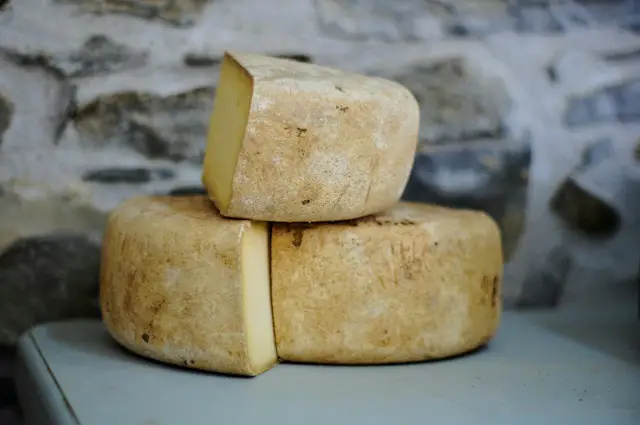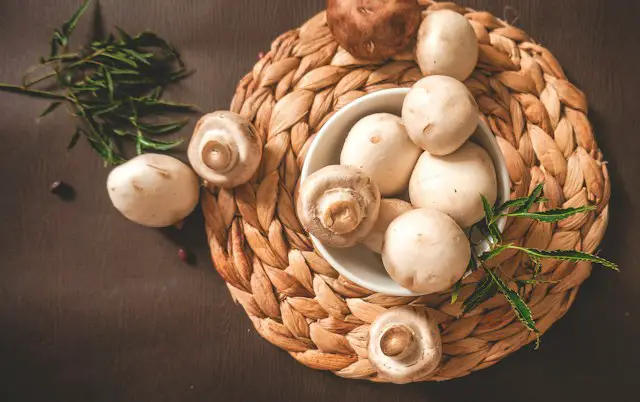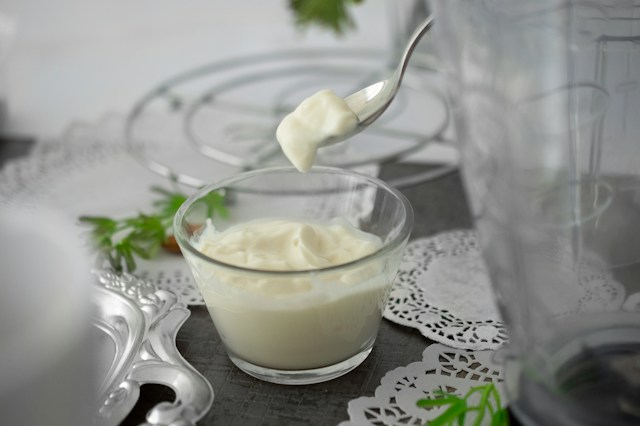Yeast is a single-celled microorganism that’s essential in baking, brewing, and winemaking. It’s known for its ability to ferment sugars, which produces carbon dioxide and alcohol in the process. However, for various health reasons, including yeast allergies, candida overgrowth, and certain autoimmune conditions, some individuals might need to limit or avoid high-yeast foods. Here’s a list of 10 high-yeast foods to consider avoiding if you’re sensitive to yeast or have been advised to limit your yeast intake.
Bread and Baked Goods
Breads, especially those that are commercially made, contain significant amounts of yeast to help them rise. This includes white bread, whole wheat bread, pastries, and other baked goods. Sourdough bread, despite its natural fermentation process, also contains yeast and should be avoided.
Alcoholic Beverages
Beer, wine, and other fermented liquors are high in yeast. During the fermentation process, yeast converts sugars into alcohol, making these beverages unsuitable for those looking to avoid yeast. Clear spirits are generally lower in yeast, but it’s wise to consume them cautiously.
Aged Cheeses

Cheese, especially aged varieties like blue cheese, cheddar, gouda, and camembert, undergo a fermentation process that involves yeast. These cheeses can exacerbate symptoms in individuals sensitive to yeast.
Vinegar and Vinegar-Containing Foods
Vinegar is produced through the fermentation of ethanol by yeast and bacteria. Foods that contain vinegar, such as pickles, mayonnaise, and certain salad dressings, should be avoided by those cutting down on yeast.
Fermented Condiments
Soy sauce, fish sauce, and miso are examples of fermented condiments that contain high levels of yeast. These products undergo a fermentation process that significantly contributes to their flavor but makes them unsuitable for a low-yeast diet.
Processed and Cured Meats
Some processed meats, including sausages, salami, and other cured meats, may contain added yeast as part of their fermentation process or to enhance flavor. Checking labels for yeast content is advisable.
Dried Fruits
Dried fruits can have surface yeast or may be processed in a way that increases their yeast content. While not inherently high in yeast, the drying process can concentrate and expose these fruits to yeast.
Mushrooms

Mushrooms are fungi, and while they are not yeast, they can contribute to fungal overgrowth or exacerbate symptoms in individuals with sensitivities to fungi, including yeast.
Leftovers
Yeast spores are present in the air and can land on food, causing it to ferment slightly, especially if it’s stored improperly or for too long. Eating fresh food is recommended to minimize yeast consumption.
Certain Nutritional Supplements
Brewer’s yeast is a common supplement touted for its health benefits, including improving energy levels and skin health. However, it’s derived from the same yeast used in beer making and should be avoided by those cutting down on yeast.
Managing Yeast Sensitivity
For those with yeast sensitivities, avoiding these foods can help manage symptoms. However, it’s essential to maintain a balanced diet. Consultation with a healthcare provider or a dietitian can ensure that you’re not missing out on vital nutrients while avoiding high-yeast foods. Remember, yeast sensitivity varies from person to person, and what affects one individual may not affect another. It’s crucial to listen to your body and adjust your diet accordingly.
Navigating a Low-Yeast Diet: Practical Tips
Adopting a low-yeast diet can be challenging, especially given the prevalence of yeast in many staple foods and condiments. However, with careful planning and some adjustments, you can manage your yeast intake without sacrificing nutrition or flavor. Here are some practical tips for navigating a low-yeast diet:
Opt for Fresh Foods
Fresh fruits and vegetables are naturally low in yeast and should form the basis of your diet. Eating a variety of fresh produce ensures you’re getting a broad spectrum of vitamins, minerals, and antioxidants, without the added yeast found in processed foods.
Explore Yeast-Free Alternatives
Look for yeast-free alternatives to your favorite foods. For example, there are yeast-free breads made with baking soda or baking powder instead of yeast. These can be a great alternative for those missing traditional bread. Similarly, opt for fresh or grilled meats instead of processed or cured varieties.
Read Labels Carefully
Learning to read food labels is crucial when avoiding yeast. Look for ingredients like “yeast extract,” “autolyzed yeast extract,” “hydrolyzed vegetable protein,” and “brewer’s yeast,” which indicate the presence of yeast. Be aware that some products may not explicitly list yeast but are traditionally made with it, such as soy sauce or vinegar.
Cook at Home
Preparing your meals at home can greatly reduce your yeast intake since you have full control over the ingredients. Explore yeast-free recipes online or in cookbooks. There are many creative and delicious options that don’t require yeast.
Fermented Foods: A Gray Area

While fermented foods like yogurt, kefir, and some types of kimchi are generally considered healthy due to their probiotic content, they can be problematic for some individuals sensitive to yeast. Listen to your body and consult with a healthcare professional to determine what’s best for you.
Monitor Your Symptoms
If you’re avoiding yeast due to health concerns, keep a food diary to monitor your symptoms and dietary intake. This can help you identify which foods may be causing issues and adjust your diet accordingly.
Consult with Health Professionals
Before making significant changes to your diet, it’s always a good idea to consult with a healthcare provider or a dietitian. They can provide guidance tailored to your specific health needs and help ensure you’re not missing out on essential nutrients.
Managing a low-yeast diet requires awareness and adjustments, but it’s entirely feasible with the right approach. By focusing on fresh, whole foods and being mindful of food labels and yeast-free alternatives, you can navigate your dietary restrictions successfully. Remember, the goal is to maintain a balanced diet that supports your overall health and wellbeing while managing your sensitivity to yeast.
Disclaimer:
The information provided in this article is for educational and informational purposes only and is not intended as medical or health advice. While efforts have been made to ensure the accuracy and reliability of the information presented, the author and publisher do not warrant the accuracy, completeness, timeliness, or usefulness of any information and cannot guarantee that the information provided reflects the most up-to-date research or health guidelines.
The content of this article is not intended to be a substitute for professional medical advice, diagnosis, or treatment. Always seek the advice of your physician or other qualified health provider with any questions you may have regarding a medical condition or dietary concerns. Never disregard professional medical advice or delay in seeking it because of something you have read in this article.
The views expressed in this article are the opinions of the author and do not necessarily reflect the official policy or position of any other agency, organization, employer, or company. The author and publisher are not responsible for any errors or omissions in this article or for the results obtained from the use of this information. All information is provided on an as-is basis.
Use of this article’s information is at the reader’s own risk. The author and publisher shall not be liable for any direct, indirect, incidental, consequential, special, or exemplary damages arising from the use of the information in this article or from the use of any products or services recommended within it.
By reading this article, the reader agrees that under no circumstance is the author or publisher responsible for any losses, direct or indirect, that are incurred as a result of using the information contained within this article, including but not limited to errors, omissions, or inaccuracies.
FAQ Section
What is yeast sensitivity?
Yeast sensitivity, also known as yeast allergy, occurs when an individual’s immune system overreacts to the presence of yeast in the body, leading to symptoms that can range from mild to severe. Unlike a yeast infection, which is caused by an overgrowth of yeast, yeast sensitivity involves an allergic reaction to yeast in foods or the environment.
Can I have yeast-free alcohol?
Most alcoholic beverages are produced through fermentation that involves yeast. However, distilled spirits are generally considered yeast-free because the distillation process removes most of the yeast and other impurities. It’s important to note that some individuals sensitive to yeast might still react to certain spirits, depending on the specific production process and their level of sensitivity.
Are sourdough breads safe for yeast-sensitive individuals?
Sourdough breads are made through a natural fermentation process that does involve wild yeasts. However, some people with yeast sensitivities may tolerate sourdough better than regular yeast breads due to the fermentation process breaking down more of the sugars and gluten, which can also be problematic. It’s essential to monitor your individual response to sourdough.
How can I replace yeast in recipes?
For those avoiding yeast, there are alternatives that can be used in baking, such as baking powder or baking soda mixed with an acid (like lemon juice or vinegar) to create the leavening effect. These substitutes work best for cakes, muffins, and biscuits rather than breads.
Is it necessary to avoid all forms of fungi if I’m sensitive to yeast?
Yeast is a type of fungus, but not all fungi will necessarily trigger sensitivity in every individual. Mushrooms and yeast have different proteins, so being sensitive to one doesn’t automatically mean you’ll react to the other. However, some people with a broad sensitivity to fungi may choose to avoid mushrooms and other fungal foods as a precaution.
Can yeast sensitivity cause digestive problems?
Yes, yeast sensitivity can lead to digestive issues in some individuals. Symptoms may include bloating, gas, abdominal pain, constipation, or diarrhea. These symptoms can vary greatly in intensity and duration, depending on the individual’s sensitivity level and the amount of yeast consumed.
How can I find out if I’m yeast-sensitive?
If you suspect you’re sensitive to yeast, it’s important to consult with a healthcare provider. They may suggest an elimination diet, where you remove yeast-containing foods from your diet for a period of time and then gradually reintroduce them to see if symptoms return. In some cases, allergy testing may also be recommended.
Is it possible to completely avoid yeast in my diet?
Yeast is naturally present in the environment and in many foods, making it challenging to avoid entirely. However, with careful dietary management and by choosing fresh, unprocessed foods, it’s possible to significantly reduce yeast intake. Always read labels and be aware of the common sources of dietary yeast.
Do probiotics contain yeast?
Not all probiotics contain yeast; many are bacterial in nature, such as Lactobacillus and Bifidobacterium species. There are yeast-based probiotics, such as Saccharomyces boulardii, which can be beneficial for certain conditions but might need to be avoided by those with yeast sensitivities. Always check the labels of probiotic supplements to determine their contents.
Can a yeast-free diet improve my health?
A yeast-free diet can benefit individuals with yeast sensitivities or certain medical conditions that are exacerbated by yeast. However, it’s not a one-size-fits-all solution and may not be necessary or beneficial for everyone. Consultation with a healthcare provider is essential to determine if a yeast-free diet is appropriate for your specific health needs.


















